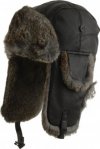- Time of past OR future Camino
- 2017, 2018, 2019, 2025
Given the current season with Pilgrims who will be starting their journeys, I thought it might be of help to repost this information I had written and posted earlier
---------------------
When deciding on gear and clothing choices related to walking in colder weather, it is important to make these considerations in conjunction with how one might use them to best effect. Adequate clothing can fail to prevent hypothermia, for example, if good technique is ignored.
Layering clothing for temperature regulation and comfort is a biggie. You never dress with the amount of clothing needed to keep you warm at the start of walking or hiking... you wear the amount of clothing needed to keep you warm 10 minutes after you start walking.
In cold weather, or even cool weather, one needs to do what is necessary to prevent overheating and sweat. That includes how fast a pace one is moving at in exerting energy, as well as how much clothing one is wearing, and how much air circulation one is able to maintain.
It does not take long, with any layering amount, to saturate clothing with sweat. THAT is when the danger of hypothermia, and at the very least a chilly discomfort will begin to take its toll. If saturation or wetness happens, the only recourse is to change into dry clothing. Since there is usually a limited amount of clothing carried in a backpack, it is essential to adopt strategies to control sweating. Keep in mind that the material of your layers will also determine the effect to you from the above scenario. Focus on clothing made from merino wool or specialized synthetics. These will allow the garment to remain somewhat insulative even though saturated with sweat. Cottons and cotton blends are a menace and can accelerate a hypothermic condition.
Strategies include those mentioned above:
Much of the above is what I have used when mountain climbing at high altitudes. Patience and light, multiple layers is the key to preventing hypothermia when being active outdoors.
---------------------
When deciding on gear and clothing choices related to walking in colder weather, it is important to make these considerations in conjunction with how one might use them to best effect. Adequate clothing can fail to prevent hypothermia, for example, if good technique is ignored.
Layering clothing for temperature regulation and comfort is a biggie. You never dress with the amount of clothing needed to keep you warm at the start of walking or hiking... you wear the amount of clothing needed to keep you warm 10 minutes after you start walking.
In cold weather, or even cool weather, one needs to do what is necessary to prevent overheating and sweat. That includes how fast a pace one is moving at in exerting energy, as well as how much clothing one is wearing, and how much air circulation one is able to maintain.
It does not take long, with any layering amount, to saturate clothing with sweat. THAT is when the danger of hypothermia, and at the very least a chilly discomfort will begin to take its toll. If saturation or wetness happens, the only recourse is to change into dry clothing. Since there is usually a limited amount of clothing carried in a backpack, it is essential to adopt strategies to control sweating. Keep in mind that the material of your layers will also determine the effect to you from the above scenario. Focus on clothing made from merino wool or specialized synthetics. These will allow the garment to remain somewhat insulative even though saturated with sweat. Cottons and cotton blends are a menace and can accelerate a hypothermic condition.
Strategies include those mentioned above:
- Limit layers of clothing to only those needed when full exertion is going to be achieved. For those who can't suck it up
for a few minutes, then wear only layers which can be quickly and easily removed. For instance, adding a poncho will add about a 15 degree F advantage to existing layers. It allows for good air circulation. As you warm up during the first 10 minutes of your walk, the poncho is easily removed and stashed into a side pocket of your pack.
- Move as slow as you need to, within reason, to keep perspiration to a minimum. This may also mean stopping to allow your body to cool down. Even with a single, lightweight layer, some folks walking under load will tend to over-heat. Keep monitoring yourself.
- Keep an insulative layer near at hand so that if you are wetting-out while walking, you can put it on quickly when you stop for a break. Keep it in an outside pocket or on top of the other contents in your pack. A light puffy jacket or mid-weight fleece or a down vest works well here. The key is to keep this layer dry and to use it as a last resort when at rest. If this strategy is needed, do not continue walking until you have been able to stop sweating and you can achieve some level of dryness to your clothes.
- Do not discount the amount of added warmth a light scarf or bandanna or a buff will bring as it insulates your neck. Wearing one can make wearing less layers very comfortable. It will also be a good first line of defense against over-heating and excess sweating by the ability to remove it, thus allowing the neck to act as a radiator in helping to shed body heat.
- Yes, the type of head gear worn makes a big difference in one's body's heat loss or retention. A hat that works well for sun is not going to be the best choice for cold weather. Wool is king, as it is far less impacted by sweat affecting its inuslative properties than most other materials. And even though wool weighs more than other types of insulation, you do not need a heavy cap of wool to keep you warm. Wool is also far more breathable than many materials which aids in heat control.
Much of the above is what I have used when mountain climbing at high altitudes. Patience and light, multiple layers is the key to preventing hypothermia when being active outdoors.
















